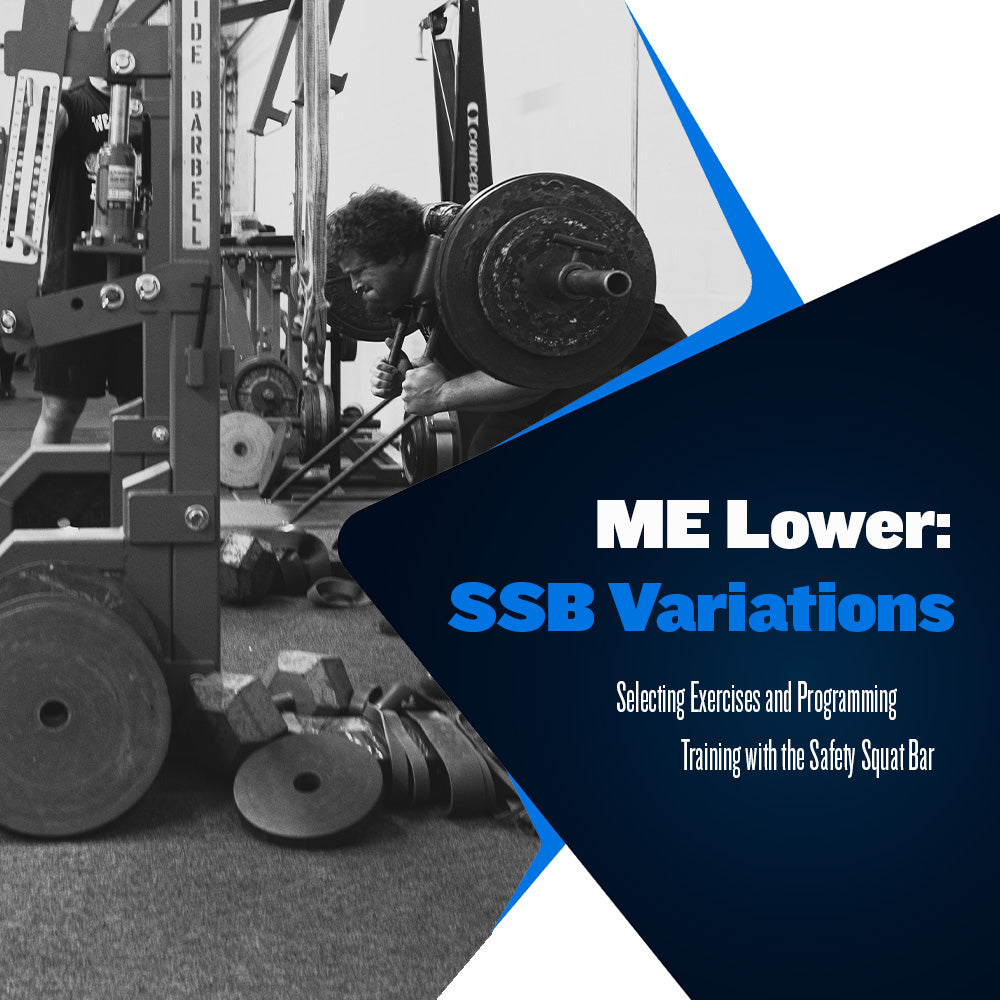Max Effort Lower: SSB Exercise Variations

Coaches should include max effort training in every athlete's training plan. Regardless of the sport you compete in, every athlete requires a high level of absolute strength. Many coaches wrongfully believe that a high level of absolute strength is only needed for athletes that compete in powerlifting or weightlifting. However, there are many benefits to absolute strength progression besides the ability to lift heavy weight.
A high level of absolute strength will give an athlete the potential to run faster, jump higher, and mitigate injury risk. This is because your absolute strength dictates the ceiling for all athletic skills and improves your durability and resiliency. If there is one surefire way to improve an athlete's performance, it is absolute strength development.
At Westside, we use a variety of exercise variations to improve absolute strength and neuromuscular coordination. The use of training tools such as specialty barbells allows us to create many of these exercise variations. One of our go-to specialty barbell choices is the Safety Squat Bar (SSB).
The SSB is a powerlifting specialty bar mostly used on lower body training days, with the barbell occasionally used to perform JM presses. This barbell emphasizes the anterior chain and is a great way to develop quad and mid/upper back strength.
The SSB places the barbell in a high bar position, with the hands holding onto handles at chest level. A tremendous strain is placed upon the quads, mid/upper back, and trunk when this barbell is used for max effort training. This makes the SSB a great bar, along with cambered barbells, to get a good mix of anterior and posterior chain-focused training.
Here are a few of our go-to SSB exercise variations we use at Westside Barbell to improve absolute strength:
SSB Low Box Squat
This exercise is a great way to focus on the quads while developing strength in the eccentric/concentric transition and improving your squat posture. Your box height should be at least 2" below your standard box height. At Westside, we typically remove 1-2 pads, which is around 2-4" below our standard box height.
Athletes can complete this variation with or without a belt and can choose to add accommodating resistance as well. When using accommodating resistance, set the bands or chains correctly so the accommodating resistance weight doesn't unload when sitting on the low box.
How to Program:
Main Exercise - max effort single or triple
Accessory Exercise - 3-5 sets of 5-8 reps
SSB Good Mornings
Using the SSB for good mornings makes a challenging exercise difficult. Given the way the SSB causes you to carry a barbell, SSB good mornings emphasize the muscles responsible for supporting the cervical and thoracic spine.
If you are a lifter who deals with your chest collapsing during the squat or have issues maintaining optimal squat posture out of the hole, you should regularly feature this exercise in your training.
When performing this exercise, maintain a slight knee bend to allow the glutes and hamstrings to become involved in the movement. You do not want to lock your legs and place all the strain on the muscles supporting your lumbar spine. This is the difference between a powerlifting-style good morning and a bodybuilding-style good morning.
How to Program:
Main Exercise - max effort triple or five reps
Accessory Exercise - 3-5 sets of 5-8 reps
SSB Anderson Squat
If you seek to improve your lower body absolute strength, the SSB Anderson squat is one of the best ways to go about it. The SSB Anderson squat is helpful in training both powerlifters and athletes.
Whether you are a powerlifter wanting a stronger squat, a football player wanting to improve blocking strength, or a wrestler wanting to improve takedown strength, this exercise will develop your brute strength.
When setting this exercise up, set the bar at a height that allows you to use your entire leg (glutes, hamstrings, calves) and avoid starting positions that overload one particular muscle group.
How to Program:
Main Exercise - max effort single or triple
Accessory Exercise - 3 sets of 8-10 reps
Please check out the Conjugate Club for more information regarding exercise programming and variations.




